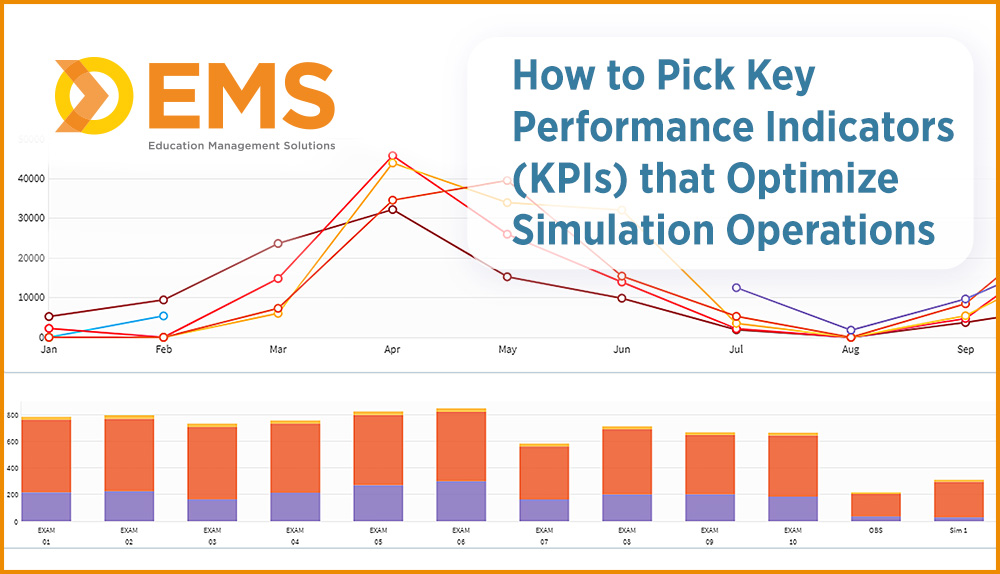For healthcare education programs, key performance indicators (KPIs) should help administrators measure training data and manage simulation center activities. Performance indicators for a simulation center may examine cases and scenarios, learner evaluations, video recordings, system usage, user and login data, and more.
Selecting KPIs for improved simulation operations
– Have direction
Select KPIs that are aligned with your training objectives. The ultimate goal of simulation-based training is to improve outcomes. Your KPIs should reflect that. Simulation-based training provides an excellent opportunity for healthcare practitioners to refine care delivery and team-based communication skills in a safe environment. If you’re conducting an in-situ cross-discipline training exercise, you might select KPIs related to communication, and measure how frequently various clinicians are in communication with one another with a goal of increasing the quality of care for the patient. And a KPI measuring facility utilization might examine who uses your lab/center, when, and for what purpose.
– Be precise
Select KPIs that are well-defined. Before you get started, outline what exactly it is you’re measuring, and ask yourself what data points you need to make a measurement. KPIs for simulation training outcomes should communicate a clear understanding of both methodology and anticipated results. If a KPI is too vague, it may be interpreted in different ways. Use reports to keep everyone on the same page and moving forward in the same direction.
– Be realistic
Select KPIs that are measurable with the tools and technology you have. Realistic planning will enable you to generate reports from evaluations, scores, performance, surveys, and create center/inventory usage statistics.
– Optimize your data
Select KPIs that inspire action. Once you’ve collected and analyzed your KPIs, you’ll want to make the most of the results. If your learners are consistently meeting – or missing – required competencies, your KPIs can guide you in modifying your curricula. Comprehensive KPIs for video recording, evaluation, cases and scenarios, users and login, center utilization, and system usage can help you make informed choices as you refine your training program and plan for the future. Try to start with a primary focus on metrics that are most relevant to your program, and take the time to think critically about how and why a certain KPI is key to improving simulation training outcomes.
Tools to Facilitate Simulation Management: DashboardKPI™
You already have a sim center, but what’s the proof that your training initiatives are really working? Are you tracking return on investment (ROI)?
Take charge of your sim center activities and plan for the future with powerful real time analytics. DashboardKPI, an innovative app integrated with EMS’ SIMULATIONiQ Enterprise, makes it easy to monitor trends and generate charts on simulation activities. DashboardKPI also allows you to review comprehensive KPIs (key performance indicators) for video recording, evaluation, cases and scenarios, users and login, system usage, and more.
Click here to schedule a free consultation.

